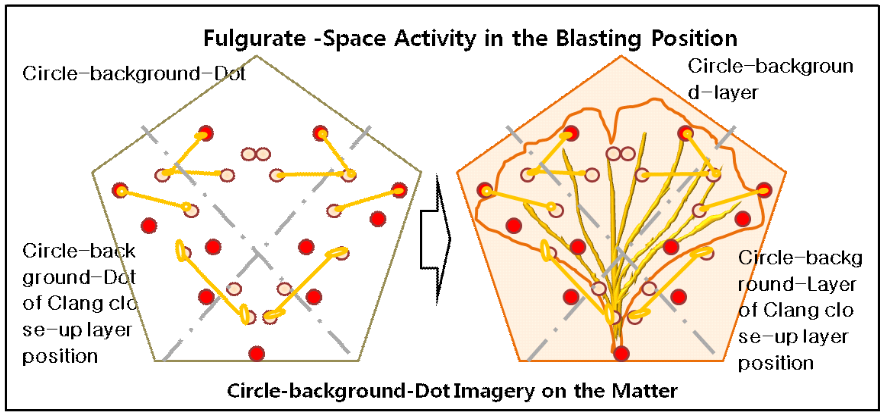Specification of the Clang Changing-Status System by the Sonant Blasting of Matter in the Blustery Sensing Techniques: Correlation with Circle-background Dot Imagery
Keywords:
Fulgurate sensing rate, Sonant sensing imagery, Clang sensing system, Clang blastingAbstract
Sonant changing-status is organized technical the blasting status on circle-background dot pattern of fulgurate sensing rate (FSR) and space sensing rate (SSR) on the sonant sensing imagery. Sensing rate condition by the sonant sensing imagery is organized with the clang blasting system. Creating a circle-background dot of blustery changing-status, we are organized of sonant value at sonant layer situation by the clang-down structure. Concept of sensing rate is figure out refer fulgurate rate and space rate for changing-status signal by the sonant blasting imagery. Moreover to served a blustery changing-status of the FSR-SSR of the maximum in terms of the sonant-blasting imagery, and sonant situation blasting that is found the a sonant value changing-status of the Son-si-FA-ξMAX with 16.54±2.47 units, that was the a sonant value changing-status of the Son-si-CO-ξMAX with 7.21±0.71 units, that was the a sonant value changing-status of the I-FL-ξMAX with 2.51±0.48 units, that was the a sonant value changing-status of the Son-si-VI-ξMAX with 0.46±0.05 units. Clang blasting is check up at the ability of the sonant-blasting imagery for the restrain degree sensing rate for FSR-SSR. Stick-out the blustery fulgurate and space imagery by the sensing rate system. So check up of imagery signal and to counter a sonant data of clang-blasting sensing system.
Downloads
References
Haralick R., Shanmugam K. and Dinstein I., Textural features for image classification. IEEE Trans Syst Man Cybern, SMC-3, (1973), 610–21.
Ranadev, M. B. ., V. R. . Sheelavant, and R. L. . Chakrasali. “Predetermination of Performance Parameters of 3-Phase Induction Motor Using Numerical Technique Tools”. International Journal on Recent and Innovation Trends in Computing and Communication, vol. 10, no. 6, June 2022, pp. 63-69, doi:10.17762/ijritcc.v10i6.5628.
Tamura H, Mori S, Yamawaki T. Texture features corresponding to visual perception. IEEE Trans Syst Man Cybern, 8 (1978), 460–73.
Al Rubaiei, M. H., Jassim, H. S., & Sharef, B. T. (2022). Performance analysis of black hole and worm hole attacks in MANETs. International Journal of Communication Networks and Information Security (IJCNIS), 14(1). https://doi.org/10.17762/ijcnis.v14i1.5078
Liebovitch LS, Toth T. A fast algorithm to determine fractal dimensions by box counting. Phys Lett A ScienceDirect, 141(8–9), (1989), 386–90.
Do M., Vetterli M. and Contourlets, a directional multiresolution image representation. In: IEEE international conference on image processing (ICIP), USA, 1(2002), I–357–360.
Kim J.L., Choi J.S. and Hwang K.S., A Study on Anticipation System of Shudder Distinction by the Physical Shape Alteration in Static Condition. The Journal of IIBC (JIIBC), 17(3) (2017), 115-120. DOI 10.7236/JIIBC.2017.17.3.115
Patil, V. N., & Ingle, D. R. (2022). A Novel Approach for ABO Blood Group Prediction using Fingerprint through Optimized Convolutional Neural Network. International Journal of Intelligent Systems and Applications in Engineering, 10(1), 60–68. https://doi.org/10.18201/ijisae.2022.268
Kim J.L. and Kim K.D., Prediction of shiver differentiation by the form alteration on the stable condition. International Journal of Internet Broadcasting and Communication (IJIBC), 9(4) (2017), 8-13. DOI 10.7236/IJIBC.2017.9.4.8
Kim J.L. and Hwang K.S., Study of quake wavelength of dynamic movement with posture. International Journal of Advanced Smart Convergence (IJASC). 4(1) (2015), 99-103.
Kim J.L. and Kim K.D., Denoteation of central motion techniques: limpness motion function and limpness sensory unit function. International Journal of Advanced Culture Technical (IJACT), 4(3) (2016), 56-61. DOI 10.17703/IJACT.2016.4.3.56
Huiting J., Flisijn H., Kokkeler A.B.J. and Smit G.J.M., Exploiting phase measurements of EPC Gen2 RFID structures. IEEE Int Conf RFID-Technol Appl (RFID-TA), (2013), 1–6.
Bekkali A., Zou S..C, Kadri A., Crisp M. and Penty R.V., Performance analysis of passive UHF RFID systems under cascaded fading channels and interference effects. IEEE Trans Wirel Commun., 14(3) (2015), 1421–33.
DiGiampaolo E. and Martinelli F., Mobile robot localization using the phase of passive UHF RFID signals. IEEE Trans Ind Electron, 61(1) (2014), 365–76.
López Y. Á., Gómez M.E. and Andrés F.L.H., A received signal strength RFID-based indoor location system, Sensors and Actuators A, 255 (2017), 118–133.
Chawla K., McFarland C., Robins G. and Shope C., Real-time RFID localization using RSS, in: 2013 International Conference on Localization and GNSS (ICL-GNSS), Turin (Italy), (2013)(25–27 June), 1–6.

Downloads
Published
How to Cite
Issue
Section
License

This work is licensed under a Creative Commons Attribution-ShareAlike 4.0 International License.
All papers should be submitted electronically. All submitted manuscripts must be original work that is not under submission at another journal or under consideration for publication in another form, such as a monograph or chapter of a book. Authors of submitted papers are obligated not to submit their paper for publication elsewhere until an editorial decision is rendered on their submission. Further, authors of accepted papers are prohibited from publishing the results in other publications that appear before the paper is published in the Journal unless they receive approval for doing so from the Editor-In-Chief.
IJISAE open access articles are licensed under a Creative Commons Attribution-ShareAlike 4.0 International License. This license lets the audience to give appropriate credit, provide a link to the license, and indicate if changes were made and if they remix, transform, or build upon the material, they must distribute contributions under the same license as the original.





